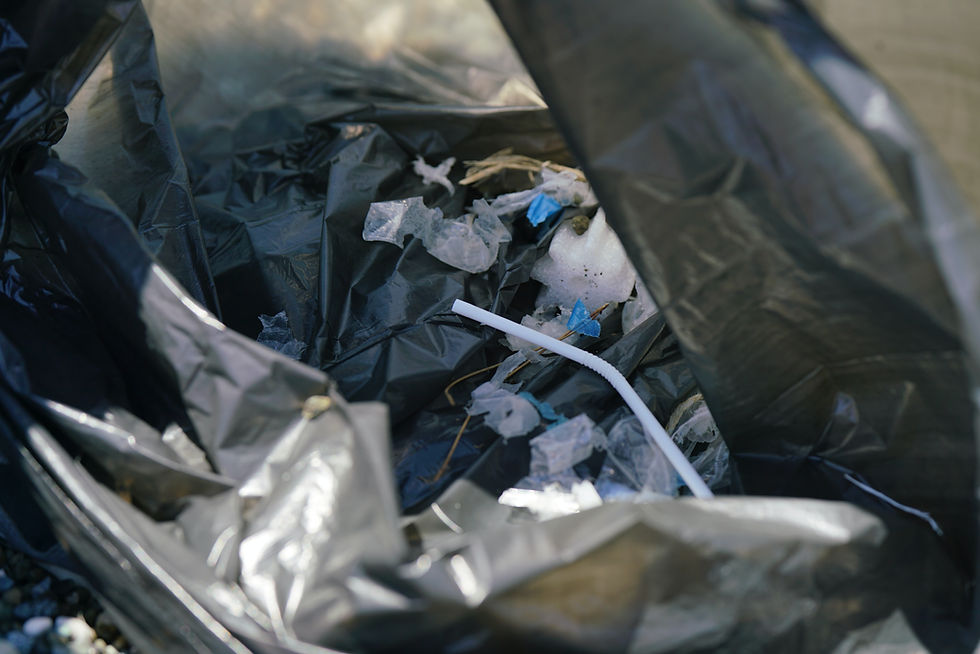Autonomous robots: A new frontier in pest management
- Editorial Team SDG12

- May 24
- 3 min read
Updated: Jun 9

Over the past two decades, sustainable agriculture has transformed from a marginal concept into a central strategy for confronting the climate crisis, protecting biodiversity, and securing global food systems. This shift aligns with key United Nations Sustainable Development Goals (SDGs), notably SDG 2 – Zero Hunger, SDG 12 – Responsible Consumption and Production, and SDG 13 – Climate Action.
The evolution of sustainable agriculture
Globally, the adoption of sustainable farming practices including organic agriculture, precision techniques, and regenerative systems has grown significantly. According to IFOAM and FAO, organic farmland increased from 15 million hectares in 2000 to over 76 million hectares by 2021, with strong growth in Europe, Oceania, and parts of Latin America.
High-performing countries:
Austria: Over 25% of farmland is organic.
Sweden: Integrates digital soil mapping and low-emission fertilisers.
New Zealand: Advances in regenerative grazing and carbon farming.
Lagging regions:
Brazil: Rapid expansion of soy and cattle industries linked to deforestation.
India and China: High dependence on agrochemicals, though pilot schemes show promise.
Africa, though challenged by infrastructure gaps, has strong potential through low-input traditional methods, which are often inherently sustainable.
The scientific risk of pesticide and herbicide use
Pesticides and herbicides, while effective in controlling agricultural threats, have wide-ranging environmental and health consequences. Their extensive use has led to:
Degradation of soil biology and fertility
Decline in pollinators and beneficial insects
Contamination of aquifers and surface waters
Bioaccumulation in food chains
Human health impacts include:
Neurotoxicity (linked to Parkinson’s and other disorders)
Endocrine disruption, particularly among agricultural workers
Elevated risk of leukaemia and non-Hodgkin lymphoma
A meta-analysis in Environmental Health (2022) estimated that pesticide-related illness and productivity losses cost low- and middle-income countries $11.8 billion annually. Globally, the external cost of pesticide use—including health and environmental damages is estimated by the UNEP to exceed $40 billion per year.
How pesticides and herbicides are made: A technical overview
Pesticides and herbicides are typically synthesised from petrochemical derivatives. The manufacturing process involves:
Chemical synthesis of active ingredients (AIs), often through chlorination, nitration, or esterification reactions
Formulation with surfactants, solvents, or carriers to enhance effectiveness and adhesion to plant surfaces
Stabilisation and packaging for field use, with safety considerations for volatility, solubility, and UV degradation
Common types:
Organophosphates: Inhibit acetylcholinesterase, paralysing insects
Glyphosate: Disrupts the EPSP synthase enzyme in plants
Neonicotinoids: Target neural pathways of insects but affect bees and aquatic life
Despite their widespread application, these substances are increasingly viewed as unsustainable, due to long-term ecotoxicological footprints.
EcoRobotix: Redefining pest management
In response, agritech innovators are developing non-chemical, precision-based alternatives. ecoRobotix, a Swiss company, exemplifies this shift. Their flagship product, the Avo autonomous robot, uses high-resolution sensors, machine learning algorithms, and robotic spraying arms to identify and selectively treat weeds with ultra-microdoses of herbicide or none at all.
The robot operates using solar energy, reducing carbon emissions, and improves application precision by over 95% compared to broadcast spraying. Trials in France, Switzerland, and Germany have shown up to 20% higher crop yields, with reduced herbicide residues in soil and runoff.
This approach not only addresses SDG targets but promotes agroecological resilience, reduces costs for farmers, and protects pollinators and soil microbiomes.
The impact of the Global Society
The transition to robotics-based, sustainable agriculture requires global collaboration. The Global Society comprising civil society organisations, governments, NGOs, private sector actors, and research institutions has a crucial role to play.
Key initiatives include:
FAO's Global Action on Pollination Services
UNEP’s Chemicals and Waste Programme
EU Farm to Fork Strategy, promoting pesticide reduction by 50% by 2030
UNDP Climate Promise, supporting digital and robotic farming innovations in climate-vulnerable nations
These partnerships reflect SDG 17 – Partnerships for the Goals, recognising that sustainable agriculture cannot progress in silos.
As agriculture faces mounting pressure from climate change, soil degradation, and rising input costs, autonomous robots like those from ecoRobotix represent a path forward. By combining technical precision, AI-driven decision-making, and minimal chemical input, this new frontier offers the potential for cleaner, safer, and more sustainable food production.
In embracing this future, global stakeholders must prioritise investments in research, farmer training, and equitable access to technology ensuring that every nation can benefit from a healthier, more resilient food system aligned with the UN Sustainable Development Goals.
Further reading and resources:
Youtube credits: https://www.youtube.com/@EcorobotixSA



